Other Track Agendas3D-Bioprinting and Tissue Engineering | Innovations in Microfluidics, Biofabrication, Synthetic Biology |

Monday, 26 March 201808:00 | Conference Registration, Materials Pick-Up, Morning Coffee and Breakfast Pastries | |
Session Title: Conference Opening Plenary Session |
| | 09:00 | 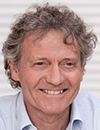 | Keynote Presentation Bioprinting: The Present and the Outlook for the Field
Gabor Forgacs, Professor, University of Missouri-Columbia; Scientific Founder, Organovo; CSO, Modern Meadow, United States of America
Bioprinting is a young, highly interdisciplinary field. Its modern era commenced in 2000 with the work of Thomas Boland and his re-engineered Hewlett Packard desktop inkjet printer. Since then a number of other technologies have been developed utilizing extrusion, acoustic waves, laser assisted delivery and lately “liquid bioprinting”. The field has also matured from its purely academic roots into successful commercial ventures. Meanwhile the initial hype surrounding the field has substantially subsided even if not fully disappeared. Long are the days when bioprinting has been hailed as a panacea for the chronic donor organ shortage, a method capable to replace dysfunctional tissue structures. At present it is mostly applied to the fabrication of sophisticated scaffold structures for tissue engineering and relatively small anatomically and physiologically relevant tissue constructs for drug development and testing and disease modeling. Overall, bioprinting has seen spectacular progress in the past 17 years and a number of market analyses have predicted a bright future for the field. I will provide a hype-free overview of the technology, where it stands today, what it has specifically accomplished and what can be expected in the years to come. |
| 09:45 | 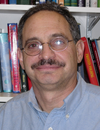 | Keynote Presentation Printing with Silks – New Approaches and Applications
David L. Kaplan, Stern Family Endowed Professor of Engineering, Professor & Chair -- Dept of Biomedical Engineering, Tufts University, United States of America
We continue to develop, study and apply silk protein-based inks useful for 3D printing. The features of these inks involve all aqueous and ambient processing, cyto-compatible features, versatility in control of mechanical properties, avoidance of chemical or photochemical crosslinking requirements, and the FDA-approved nature of the protein. hese features support a range of studies related to biomaterials and tissue engineering, as well as cell delivery and related themes. Our most recent advances in building complex 3D structures using silk-based approaches will be reviewed, including new processing methods, underwater silk printing inks, and new modes to functionalize biomaterials with silk ink jet printing for biomaterials. |
| 10:30 | 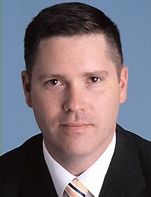  | Keynote Presentation 3D Printing for Engineering Complex Tissues
John Fisher, Fischell Family Distinguished Professor & Department Chair; Director, NIH Center for Engineering Complex Tissues, University of Maryland
Bhushan Mahadik, Assistant Director, NIH/NIBIB Center for Engineering Complex Tissues, University of Maryland, United States of America
The generation of complex tissues has been an increasing focus in tissue engineering and regenerative medicine. With recent advances in bioprinting technology, our laboratory has focused on the development of platforms for the treatment and understanding of clinically relevant problems ranging from congenital heart disease to preeclampsia. We utilize stereolithography-based and extrusion-based additive manufacturing to generate patient-specific vascular grafts, prevascular networks for bone tissue engineering, dermal dressings, cell-laden models of preeclampsia, and bioreactors for expansion of stem cells. Furthermore, we have developed a range of UV crosslinkable materials to provide clinically relevant 3D printed biomaterials with tunable mechanical properties. Such developments demonstrate the ability to generate biocompatible materials and fabricated diverse structures from natural and synthetic biomaterials. In addition, one of the key challenges associated with the development of large tissues is providing adequate nutrient and waste exchange. By combining printing and dynamic culture strategies, we have developed new methods for generating macrovasculature that will provide adequate nutrient exchange in large engineered tissues. Finally, the use of stem cells in regenerative medicine is limited by the challenge in obtaining sufficient cell numbers while maintaining self-renewal capacity. Our efforts in developing 3D-printed bioreactors that mimic the bone marrow niche microenvironment have enabled successful expansion of mesenchymal stem cells by recapitulating the physiological surface shear stresses experienced by the cells. This presentation will cover the diverse range of materials and processes developed in our laboratory and their application to relevant, emerging problems in tissue engineering. |
| 11:15 | Morning Coffee, Tea and Networking in the Exhibit Hall | 11:45 | 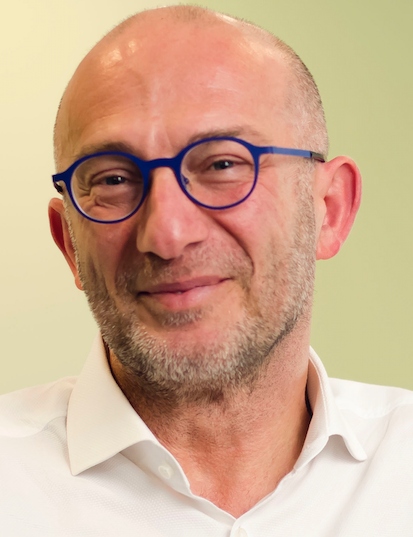 | Keynote Presentation “Extreme Microfluidics” Label-Free of Sorting of Extremely Rare Circulating Tumor Cells and Clusters
Mehmet Toner, Helen Andrus Benedict Professor of Biomedical Engineering, Massachusetts General Hospital (MGH), Harvard Medical School, and Harvard-MIT Division of Health Sciences and Technology, United States of America
Viable tumor-derived circulating tumor cells (CTCs) have been identified in peripheral blood from cancer patients and are not only the origin of intractable metastatic disease but also marker for early cancer. However, the ability to isolate CTCs has proven to be difficult due to the exceedingly low frequency of CTCs in circulation. As a result, their clinical use until recently has been limited to prognosis with limited clinical utility. More recently, we introduced several microfluidic methods to improve the sensitivity of rare event CTC isolation, a strategy that is particularly attractive because it can lead to efficient purification of viable CTCs from unprocessed whole blood. The micropost CTC-Chip (µpCTC-Chip) relies on laminar flow of blood cells through anti-EpCAM antibody-coated microposts, whereas the herringbone CTC-Chip (HbCTC-Chip) uses micro-vortices generated by herringbone-shaped grooves to efficiently direct cells toward antibody-coated surfaces. These antigen-dependent CTC isolation approaches, also called “positive selection”, led to the development of a third technology, which is tumor marker free (or antigen-independent) sorting of CTCs. We call this integrated microfluidic system the CTC-iChip, based on the inertial focusing strategy, which allows positioning of cells in a near-single file line, such that they can be precisely deflected using minimal magnetic force. The major advantage of the microfluidic negative depletion approach stems from the fact that it is based on “negative depletion” of blood cells and hence it is applicable to all solid tumors and does not require tagging or labeling the tumor cells. As a result the CTCs are isolated in pristine conditions and are amenable to analysis using imaging, molecular, and other approaches. We have also identified the presence of CTC clusters, which led to the development of a microchip that is designed to sort clusters of cells from whole blood without any labeling. The propensity of CTC clusters to lead to metastasis is significantly higher than single CTCs, and underlies the importance these cells play in the metastatic cascade. This presentation will share our integrated strategy to simultaneously advance the engineering and microfluidics of CTC-Chip development, the biology of these rare cells, and the potential clinical applications of circulating tumor cells. |
| 12:30 |  | Keynote Presentation Molecular Analysis of Rare Cells Using Magnetic Ranking Cytometry
Shana Kelley, Professor, University of Toronto, Canada
The analysis of heterogeneous ensembles of rare cells requires
single-cell resolution to allow phenotypic and genotypic information to
be collected accurately. We developed a new approach, magnetic ranking
cytometry, that uses the magnetic loading of individual cells to be
monitored as a means to report on levels of proteins and nucleic acids
at the single cell level. This approach can be used to profile
circulating tumor cells in blood and can be used in a variety of other
applications where high-resolution cell separation provides useful
information. |
| 13:15 | Networking Lunch in the Exhibit Hall -- Meet the Exhibitors and View Posters | |
Session Title: Emerging Themes and Trends in 3D-Bioprinting |
| | 14:30 | Constructing Microfluidic Analytical Systems from 3D-Printed Blocks with Integrated Functional Components
Noah Malmstadt, Professor, Mork Family Dept. of Chemical Engineering & Materials Science, University of Southern California, United States of America
The integration of functional components into microfluidic systems is necessary for building compact analytical devices. Optical detection and measurement, electromechanical fluid switching, active mixing, and magneto- and electrophoretic separations all require the integration of components on top of the underlying fluidic architecture. There has been significant work towards integrating such functional components by including them directly in the microfabrication process. This approach, however, leads to expensive fabrication workflows that are often limited to a narrow set of applications. To overcome these limits, we are designing a microfluidic architecture that is easily adaptable to a wide variety of applications. This architecture is based on 3D-printed elements that can be assembled into analytical devices. Functional components are integrated into these elements; the structures are printed to directly accommodate off-the-shelf components including photodiodes, heaters, sensors, and fiber optic fittings. We have demonstrated the utility of this approach by assembling a system capable of performing automated ELISA assays from 3D-printed blocks with integrated functional components. | 15:00 |  | Keynote Presentation Human-on-a-Chip Systems for Concurrent Toxicity and Efficacy Evaluation for Pre-Clinical Applications
James Hickman, Professor, Nanoscience Technology, Chemistry, Biomolecular Science and Electrical Engineering, University of Central Florida; Chief Scientist, Hesperos, United States of America
The utilization of human-on-a-chip or body-on-a-chip systems for toxicology and efficacy that ultimately should lead to personalized medicine has been a topic that has received much attention recently. Currently drug discovery and subsequent regulatory approval for new candidates requires 10-15 years of development time before general availability is granted by either the FDA or EMA. This can be at either the single organ level, or more importantly, advanced systems where multiple organ mimics are integrated in a serum-free defined medium under flow to allow organ to organ communication and interactions for mechanistic investigations for not only safety but efficacy as well. The idea is to integrate BioMEMs devices and surface modifications with protein and cellular components, for initiating and maintaining self-assembly and growth into biologically, mechanically and electronically interactive functional multi-component systems. A functional neuromuscular junction model composed of human stem cell derived motoneurons and muscle has been used to produce dose response curves for synaptic cleft toxins. Cardiac modules have been developed that allow independent evaluation of electrical conduction and force generation in cardiac muscle for mechanistic studies for both human iPSC and embryonic stem cells. These have also been combined with liver systems in the same platform to include metabolic effects that have been demonstrated with 4 different drug/metabolic pairs. Recently a 4-organ system with recirculating medium was demonstrated for 28 days and exhibited toxicity with 5 drugs that reproduced in vivo results. Detailed results with the above system will be presented as well as results from collaboration with industry partners. There is currently a focus at the NIH, FDA and EMA to understand how one could validate these systems such that qualification could be granted for their use to augment and possibly replace animal studies. This talk will also give results of six workshops held at NIH as a collaboration between the American Institute for Medical and Biological Engineering (AIMBE) and NIH to explore what is needed for validation and qualification of these new systems. |
| 15:30 | Bioprinting Tumor Models with Mechanically and Biochemically Tunable Bioinks that Mimic the Native Tumor Microenviroment
Joseph Kinsella, Assistant Professor of Bioengineering, McGill University, Canada
Physiological tumor microenvironments (TME) exhibit varied mechanical and biological properties that influence the formation rate, size, and frequency of multicellular tumor spheroids (MCTS). Here we developed a tunable composite hydrogel composed of alginate and gelatin to create 3D bioprinted models of triple negative breast cancer cells that develop distinct MCTS differences dependent upon the mechanical and biochemical properties of the gels for greater than 30 days in culture. These mechanically and biochemically tunable bioinks are capable of recapitulating the native tumor stroma and provide a novel tool to study how mechanics and cell-matrix interactions result in tumor development. | 16:00 | Coffee Break and Networking in the Exhibit Hall | |
Session Title: Afternoon Joint Session -- Emerging Themes and Companies in BioEngineering, circa 2018 |
| | 16:30 | 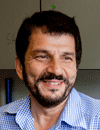 | Keynote Presentation Droplet Microfluidics For Single Cell Studies
David Weitz, Mallinckrodt Professor of Physics and Applied Physics, Director of the Materials Research Science and Engineering Center, Harvard University, United States of America
This talk will describe the use of microfluidic technology to control and manipulate drops whose volume is about one picoliter. These can serve as reaction vessels for biological assays. These drops can be manipulated with very high precision using an inert carrier oil to control the fluidics, ensuring the samples never contact the walls of the fluidic channels. Small quantities of other reagents can be injected with a high degree of control. The drops can also encapsulate cells, enabling cell-based assays to be carried out. The use of these devices for biotechnolgy and diagnostic applications will be described. |
| 17:00 |  The Age of Applications The Age of Applications
Ricky Solorzano, CEO, Allevi
In an era where bioprinting continues to hold promise sometimes its hard to understand why and how are they useful. What key applications will allow me to take my research to the next level and stay on the cutting edge. Come and listen to the key ways bioprinting is being most commonly used by researchers around the world.
| 17:30 |  Regenerative Medicine Research Performed Using EnvisionTEC’s 3D-Bioplotter Regenerative Medicine Research Performed Using EnvisionTEC’s 3D-Bioplotter
Nicole Witzleben, Biomedical Applications Engineer, EnvisionTEC
Within the field of Regenerative Medicine is the growing research branch into bioprinting. The main application of bioprinting is the creation of bone and tissue scaffolds for implantation. Such scaffolds are not meant to be permanently implanted within the body, they are intended to allow the body’s own tissue to regenerate around the scaffold as it dissolves. Five fields of research where bioprinting is widely used include bone regeneration, cartilage regeneration, soft tissue biofabrication, drug release, and organ printing. The 3D-Bioplotter is a rapid prototyping machine specifically designed to print biocompatible material for these applications. Various biomaterials can be selected by the user for the appropriate area of research or even printed simultaneously to fabricate multi-materials parts. The user is able to optimize the inner structure of the scaffold to meet the requirements of their project with different designs, including lines, zig-zags, waves, and honeycombs. This presentation will provide an insight into the developing field of bioprinting and the 3D-Bioplotter’s role in that growth. We will review the timeline in the development of research utilizing EnvisionTEC’s 3D-Bioplotter and reference noteworthy published studies in bioprinting.
| 18:00 |  Technology Spotlight: Technology Spotlight:
Building the World of Bioprinting: Science, Education, and Community
Erik Gatenholm, CEO, CELLINK, United States of America
Hector Martínez, Chief Technology Officer, CELLINK, United States of America
From the first bioink company in the world to a collaborative partner to an industry leader and scientific pioneer.
| 18:30 | Networking Reception with Beer, Wine and Appetizers in the Exhibit Hall. Engage with Colleagues and Visit the Exhibitors | 19:30 | Close of Day 1 of the Conference |
Tuesday, 27 March 201807:00 | Morning Coffee, Tea, Breakfast Pastries and Networking in the Exhibit Hall | |
Session Title: Emerging Themes in the Various BioEngineering Fields |
| | 08:00 | Bio-machines and Bio-manufacturing
Xuanhe Zhao, Associate Professor, Massachusetts Institute of Technology (MIT), United States of America
While human tissues are mostly soft, wet and bioactive; machines are
commonly hard, dry and biologically inert. Bridging human-machine
interfaces is of imminent importance in addressing grand challenges in
health, security, sustainability and joy of living facing our society in
the 21st century. However, designing human-machine interfaces is
extremely challenging, due to the fundamentally contradictory properties
of human and machine. At MIT SAMs Lab, we propose to use tough
bioactive hydrogels to bridge human-machine interfaces. On one side,
bioactive hydrogels with similar physiological properties as tissues can
naturally integrate with human body, playing functions such as
scaffolds, catheters, drug reservoirs, and wearable devices. On the
other side, the hydrogels embedded with electronic and mechanical
components can control and response to external devices and signals. In
the talk, I will first present a bioinspired approach and a general
framework to design bioactive and robust hydrogels as the matrices for
human-machine interfaces. I will then discuss large-scale manufacturing
strategies to fabricate robust and bioactive hydrogels and hydrogel
electronics and machines, including 3D printing. Prototypes including
smart hydrogel band-aids, hydrogel robots and hydrogel circuits will be
further demonstrated. | 08:30 | Contracting 3D Printed Microtissues: Solid and Fluid Instabilities
Thomas Angelini, Professor, Department of Mechanical and Aerospace Engineering, University of Florida, United States of America
Living cells are often dispersed in extracellular matrix (ECM) gels like collagen and Matrigel as minimal tissue models. Generally, large-scale contraction of these constructs is observed, in which the degree of contraction and compaction of the entire system correlates with cell density and ECM concentration. The freedom to perform diverse mechanical experiments on these contracting constructs is limited by the challenges of handling and supporting these delicate samples. Here, we present a method to create simple cell-ECM constructs that can be manipulated with significantly reduced experimental limitations. We 3D print mixtures of cells and ECM (collagen-I) into a 3D growth medium made from jammed microgels. With this approach, we design microtissues with controlled dimensions, composition, and material properties. We also control the elastic modulus and yield stress of the jammed microgel medium that envelops these microtissues. Similar to well-established bulk contraction assays, our 3D printed tissues contract. By contrast, the ability to create high aspect ratio objects with controlled composition and boundary conditions allows us to drive these microtissues into different regimes of physical instability. For example, a contracting tissue can be made to buckle as a whole or break up into droplets, depending on composition, size, and shape. These new instabilities may be employed in tissue engineering applications to anticipate the physical evolution of tissue constructs under the forces generated by the cells within. | 09:00 | Digital Biomanufacturing Enabling Multimode 4D Bioprinting
William G Whitford, Life Science Strategic Solutions Leader, DPS Group, United States of America
3D bioprinting is the deposition of microchannels or droplets of a polymer and/or cell dispersion (bioink) to create 3D tissue-like structures that includes living cells. 4D bioprinting adds the extra dimension of time supporting the activity of smart, environmentally responsive biological structures and tissues. Many types of printing technologies are now used in bioprinting and each require appropriate manufacturing equipment, procedures and materials. Digital biomanufacturing orchestrates such concepts as increased monitoring, data handling, control algorithms, machine-learning and process modeling to a new level of process understanding, prediction and control. The IIoT, Big Data and Cloud technologies insure that the (historical and real-time) data being collected can be employed productively in richer data management, analysis and model generation. This leads to such values as more rapid process development as well as more comprehensive process control, automation and self-learning autonomation. Digital biomanufacturing will assist in the modeling and imaging required to recapitulate the (often personalized) complex and heterogeneous architecture of functional tissues and organs. It will also provide the required coordination and dynamic control of consequent complex tomographic information and models, multimode 3D printing and biofabrication processes, as well as such ancillary procedures as the environmental control of bioinks and nascent constructs. | 09:30 |  | Keynote Presentation Layer-By-Layer Tissue Engineering Using Prefabricated Parts With Organ Cell Density
Jeffrey Morgan, Professor of Medical Science and Engineering, Brown University, United States of America
|
| 10:00 |  | Keynote Presentation Human “Body-on-a-Chip” Systems to Test Drug Efficacy and Toxicity
Michael Shuler, Samuel B. Eckert Professor of Engineering, Cornell University, President Hesperos, Inc., United States of America
Human microphysiological or “Body-on-a-Chip” systems are powerful tools
to assess the potential efficacy and toxicity of drugs in pre-clinical
studies. Having a human based, multiorgan system, that emulates key
aspects of human physiology can provide important insights to complement
animal studies in the decision about which drugs to move into clinical
trials. Our human surrogates are constructed using a low cost, robust
“pumpless” platform. We use this platform in conjunction with
“functional” measurements of electrical and mechanical activity of
tissue constructs (in collaboration with J. Hickman, University of
Central Florida). Using a system with four or more organs we can predict
the exchange of metabolites between organ compartments in response to
various drugs and dose levels. We will provide examples of using the
system to both predict the response of a target tissue as well as
off-target responses in other tissues/organs. We believe such models
will allow improved predictors of human clinical response from
preclinical studies. |
| 10:30 |  Recombinant Human Collagen Based BioInk for 3D Bioprinting Recombinant Human Collagen Based BioInk for 3D Bioprinting
Nadav Orr, Vice President, R&D, CollPlant, Ltd. Israel
Recombinant human Type I collagen (rhCollagen) from engineered plants was developed as BioInk for 3D-Bioprinting. The BioInk, rhCollagen-MA, is compatible with all major printing technologies. It has superior rheological properties and demonstrated high biocompatibility with different cells types.
| 11:00 | Autocatalytic Immune Reactions
Daniel Irimia, Associate Professor, Surgery Department, Massachusetts General Hospital (MGH), Shriners Burns Hospital, and Harvard Medical School, United States of America
Neutrophil swarms protect healthy tissues by sealing off sites of infection. During swarming, neutrophils accumulate fast and in large numbers, under the control of mediators released by neutrophils already at the site. These mediators stimulate the arrival of additional neutrophils in an autocatalytic reaction that results in an exponential rate of swarm size increase. However, despite the autocatalytic reaction, not all 25 billion neutrophils from one’s body end up in one giant swarm. Thus, our recent goal was to identify the physiologic mediators that disrupt the autocatalytic reaction and stop the growth of neutrophil swarms. For this, we developed and validated large microscale arrays of microbe clusters, which can trigger the synchronized growth of thousands of swarms at once. The new tool enabled us to concentrate large amounts of swarm-released mediators in small volumes, and ultimately identify lipoxin A4 (LXA4) is a key mediator that disrupts the autocatalytic reactions, stops the growth of swarms, and ultimately leads to swarm dispersal. These and other insights from the study of neutrophil swarming will teach us how to design better strategies to combat infections and to control acute and chronic inflammatory diseases. | 11:30 | Hierarchical Biomaterials for Organ-on-a-Chip Devices and Tissue Engineering
Frederik Claeyssens, Senior Lecturer, Materials Science and Engineering, University of Sheffield, United Kingdom
Natural tissues and organs are typically structured in a hierarchical fashion, in which the Extra-Cellular Matrix (ECM) provides a microporosity to optimally support cell growth while larger scale structures (e.g. vasculature and boundary layers) are incorporated to support the function and structure of the tissue and organ. To mimic this multiscale structuring in synthetic biomaterials we combine additive manufacturing with self-assembly. In this structuring technique the internal porosity is governed by self-assembly and the macroscopic structure is constructed by additive manufacturing. Emulsion templating is used as self-assembly technique to produce materials with a high microscale porosity. These emulsions can subsequently be used as photocurable resins for stereolithography, producing user-defined macroscale structures with a tissue-like microporosity. The mechanical properties of these materials can be varied via the changing the monomer ratio within the resin. Additionally, biodegradable scaffolds can be fabricated via polycaprolactone-based resins. We produce these hierarchical structured material in 3D structured materials such as woodpile-style scaffolds, microspheres with controllable diameter and as 3D microenvironments that can be integrated in standard poly-dimethylsiloxane (PDMS) based microfluidics. These scaffolds we currently investigate as a platform for organ-on-a-chip based devices and tissue engineering. | 12:00 | Networking Lunch in the Exhibit Hall | |
Session Title: Tissue Engineering and Bioprinting -- Research Trends and Applications Development |
| | 12:30 | Multi-Process Biofabrication for Bioinspired Tissue Models
Yan Yan Shery Huang, Professor of BioEngineering, University of Cambridge, United Kingdom
Elisabeth Gill, , University of Cambridge, United Kingdom
Multi-material and hybridized bioprinting technologies offer promising avenues to create mini-tissue models with enhanced heterogeneity and complexity. This presentation will first overview the application of 3D bioprinting and microfabrication techniques to fabricate tissue-on-a-chip systems for in vitro drug testing and screening. A layer-wise 3D biomimetic fibre patterning process will then be described. Multimaterial integration, with applications in building a generic cancer metastasis model is illustrated. | 13:00 | Scaffold-Free Tissue Engineering with ‘Regenova Bio 3D Printer’
Nicanor Moldovan, Associate Research Professor, Departments of Biomedical Engineering and Ophthalmology, Indiana University-Purdue University Indianapolis, United States of America
‘Scaffold-free’ tissue engineering relies on cells’ own ability to reconstitute complex bio-similar tissues, without the need of artificial materials as extracellular matrix equivalents (or ‘scaffolds’). I will discuss the uses in this regard of ‘Regenova Bio 3D Printer’ by Cyfuse Biomedical, capable to perform the skewering in micro-needles of cell spheroids for making larger 3D constructs, and modalities of ‘hybrid’ bioprinting as a means to overcome some of its limitations. | 13:30 | Designing Novel Biomaterial Inks For 3D Printing
Murat Guvendiren, Assistant Professor, Chemical, Biological and Pharmaceutical Engineering, New Jersey Institute of Technology, United States of America
3D printing has become a significant tool to achieve structural complexity in fabricating biomaterial scaffolds and medical devices. However, the currently printed devices from biodegradable polymers only serve as a structural support. They permit but do not promote biological function, due to a lack of bioactivity. Our goal is to develop a novel biodegradable polymer family for extrusion-based printing, with user defined and tunable bioactivity. | 14:00 | Vascular and Myocardial Patches Using Cell Sheet Technology
Joyce Wong, Professor of Biomedical Engineering and Materials Science & Engineering, Boston University, United States of America
A major challenge in vascular tissue engineering has been the ability to preserve the organization of native vessels in engineered tissues. We hypothesize that the structural organization of cells and extracellular matrix are critical for achieving functional mechanical properties of the tissue. In addition, our studies have demonstrated that cell phenotype is modulated by physiochemical properties of the underlying substrate. We have developed several methods to generate cell sheets that can be micropatterned and stacked in desired orientations. In addition, we have recently designed and fabricated a novel tissue stretching device that can measure the mechanical properties of single cell sheets. To our knowledge, the ability to test the mechanics of single cell sheets has not been reported yet; this will be important for computational models we are developing to aid in vascular tissue engineering. We will also discuss a novel cell source for myocardial patches and a bioMEMS device that can be used to assess how well specific cell sources perform in terms of physiological function under conditions relevant for patient implantation. | 14:30 | Injectable 3D Cryogels for Biomedical Applications
Sidi Bencherif, Assistant Professor, Department of Chemical Engineering, Northeastern University, United States of America
Injectable biomaterials are increasingly being explored to minimize risks and complications associated with surgical implantation. Highly elastic cryogels with shape-memory properties have recently been developed to be injected through a small-bore needle with nearly complete geometric restoration once delivered. Cryogels displaying an interconnected macroporous structure can be molded to a variety of shapes and sizes, and may be optionally loaded with therapeutic agents or cells. These injectable scaffolds show great promise for various biomedical applications, including tissue engineering, cell transplantation, drug delivery, and cancer immunotherapy. | 15:00 | 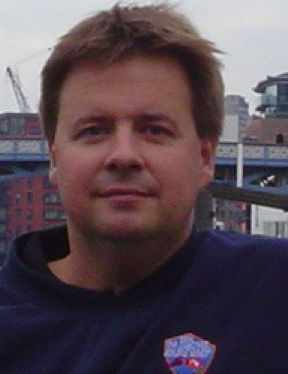 | Keynote Presentation Laser-Based 3-D Bioprinting
Douglas Chrisey, Jung Chair of Materials Engineering and Professor of Physics, Tulane University, United States of America
Laser direct-write (LDW) printing was initially used for printing complex electronic materials in thin-films and circuits with spatial resolutions ~10 µm. This precise resolution and reproducibility made laser direct-write techniques attractive for adaptation to tissue engineering applications. Three-dimensional (3D) printing in tissue engineering requires the ability to deposit precise patterns of multicomponent and multiphase materials without degrading desirable properties such as porosity, homogeneity, or biological activity. Laser-based techniques can deposit patterns of biomaterials such as proteins, DNA, or living cells (individual or aggregated) with high spatial and volumetric resolution on the order of a picoliter or less, without compromising the viability of these delicate structures. This talk discusses how laser-based 3D printing techniques seek to address issues in tissue and organ printing. |
| 15:30 | 3D Bioprinting Personalized Neural Tissue
Stephanie Willerth, Professor and Canada Research Chair in Biomedical Engineering, University of Victoria and CEO – Axolotl Biosciences, Canada
The brain and spinal cord possess unique properties, including being able to send and receive electrical signals. My research group investigates novel methods for engineering neural tissue through the use of pluripotent stem cells and direct reprogramming of somatic cells, like fibroblasts and astrocytes. This talk will cover our recent advances to developing novel biomaterial strategies for engineering neural tissue from pluripotent stem cells and how they can be translated for applications in 3D printing. | 16:00 | Cardiovascular Tissue Engineering Using 3D Printing Technology
Narutoshi Hibino, Assistant Professor, Cardiac Surgery, Johns Hopkins Hospital, United States of America
Cardiovascular disease is one of the leading causes of death worldwide despite the variety of medical, mechanical, and surgical strategies. We have developed novel 3D printing technologies that could change the practice of cardiovascular disease treatment, including patient specific 3D printed tissue engineered vascular graft and bio 3D printed cardiac tissue. I will discuss insights of these new 3D printing technology as well as challenges we need to overcome for future clinical application and commercialization. | 16:30 | Bioprinting and Stem Cells for Engineering Human Tissues
Jinah Jang, Associate Professor, Pohang University of Science And Technology (POSTECH), Korea South
Engineered tissues with intrinsic geometry and appropriate cellular organization can produce high functional outcomes. Although the use of various micro-fabrication technologies for recapitulating tissue constructs has received considerable attention, the technical and operational capabilities in resembling native 3D tissue architecture remain to be overcome. In this sense, 3D printing technology is considered a useful technology with which to facilitate the construction of biomaterials and cells in desired organizations and shapes that have physiologically relevant geometry, complexity, and micro-environmental cues. The selection of biomaterial is the most critical part in this technology; yet, their cellular affinity has rarely been considered in the context of cell printing logistics. In this talk, I will introduce an advanced bioink, which made up with decellularized tissue extracellular matrix (dECM). The material is capable of providing an optimized microenvironment conducive to the growth and function of 3D engineered tissues. As a translational application, we demonstrated the therapeutic efficacy of stem cell-laden 3D engineered tissues, which can deliver cardiac stem cells with higher biological activity for the treatment of ischemic diseases. | 17:00 | Stereolithography Bioprinting of Cell-Laden Hydrogel Microarrays for High-Throughput Screening of Intracellular mRNA Delivery and Cell Response to Microenvironment
Paula Menezes, Researcher, Oregon Health and Science University, United States of America
Here we present a novel high-throughput 3D bioprinting technology to fabricate stem cell laden-hydrogels with varying stiffness in a microarray arrangement. We validated this method by determining the osteogenic differentiation and how matrix physical properties influence delivery of mRNA-laden nanoparticles. | 17:30 | Development of 3D Model of Intestinal Epithelium to Study Intestinal Stem Cell Fate and Proliferation
Justine Creff, Researcher, LAAS-CNRS, France
A new model of in vitro 3D intestinal epithelium has been developed based on high resolution 3D printed hydrogel structures. These scaffolds recapitulate key features of mouse intestinal crypts and villi and were validated using colorectal cancer cells. | 18:00 | Close of Day 2 of the Conference. |
|

 Add to Calendar ▼2018-03-26 00:00:002018-03-27 00:00:00Europe/London3D-Bioprinting and Tissue EngineeringSELECTBIOenquiries@selectbiosciences.com
Add to Calendar ▼2018-03-26 00:00:002018-03-27 00:00:00Europe/London3D-Bioprinting and Tissue EngineeringSELECTBIOenquiries@selectbiosciences.com